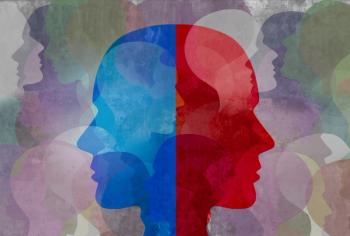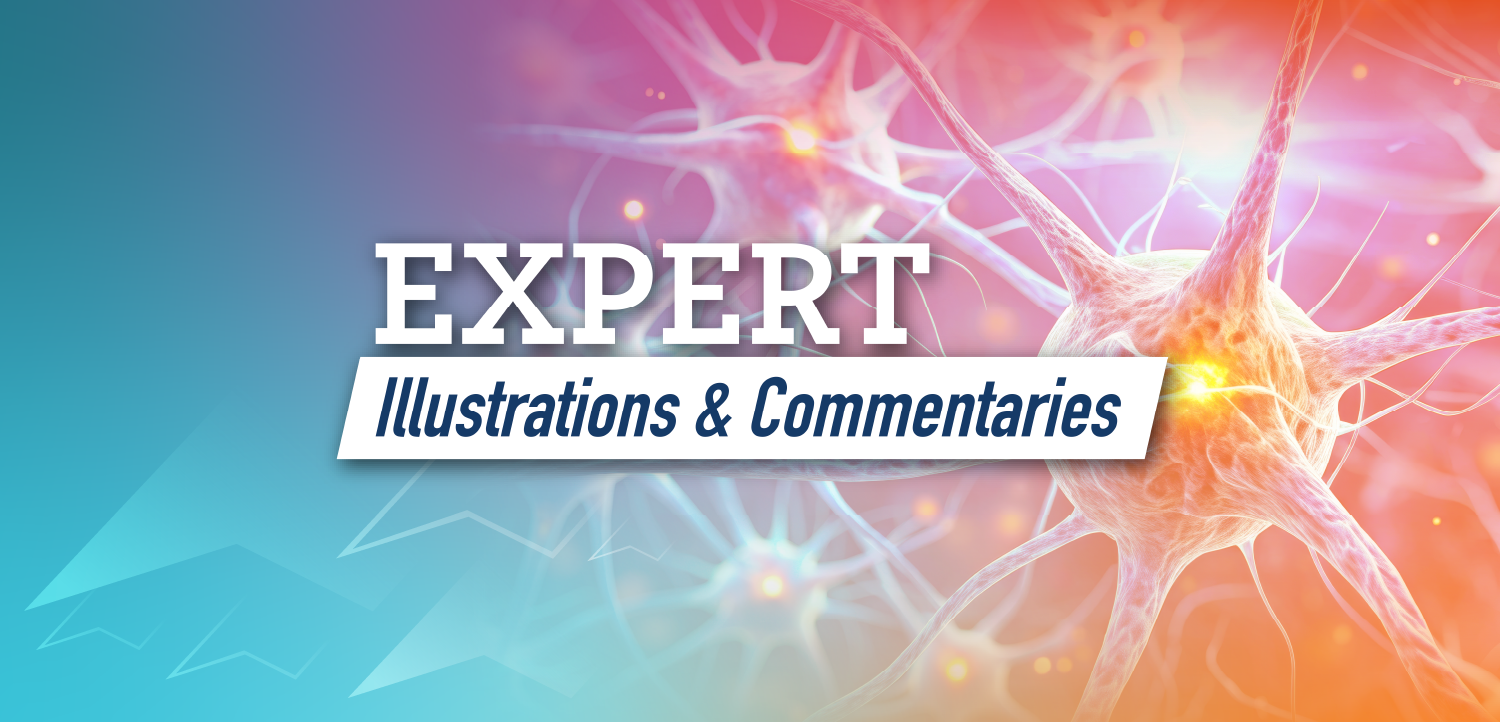
Will the Benzodiazepine Wars Ever End?
Benzodiazepines spark ongoing debate, balancing effective anxiety relief with addiction risks, as cultural attitudes shape their use and perception.
AFFIRMING PSYCHIATRY
First released in the early 1960s, benzodiazepines quickly became the most widely prescribed medications in the world.1 By the 1970s, they had become the most controversial as well. Newspaper headlines such as, “A New Kind of Drug Abuse Epidemic,” appeared, followed by the international best-selling tale of benzodiazepine addiction, I’m Dancing as Fast as I Can.2
The controversies swirling around benzodiazepines continue to this day. Some doctors and researchers have labeled benzodiazepines as the “new opioids,”3 and others speak of wide misuse among prescribers causing an “iatrogenic epidemic.” Scientific publications call out a “benzodiazepine scandal,”4 describe them as an “overused drug class”5 and wonder, “will we every learn?”6
At the same time, benzodiazepines continue to be widely prescribed worldwide. Some experts claim that benzodiazepines have been the targets of hostile marketing by antidepressant manufacturers, while an International Task Force on Benzodiazepines, composed of scientists and clinicians, agues against an “excessively negative” portrayal of benzodiazepines.7 On the other side of the aisle, The Alliance for Benzodiazepine Best Practices asserts that the medications are “dangerously overprescribed” and argues that they should not be used for longer than 2 to 4 weeks.8 And yet long term use of benzodiazepines remains commonplace.
Benzodiazepines: Good or Bad?
After 60 years of extensive experience with these medications, one might expect a clear answer as to whether they represent something that is boon to patients or an outright threat. But feeling about these medications has see-sawed across the decades, and for good reason. In the 1960s, benzodiazepines were easily the most effective medications for anxiety and also far, far safer than barbiturates and tricyclic antidepressants (which represented the other clinical options). By the end of the 1970s, benzodiazepines were confirmed to be addictive and potentially dangerous substances.
And yet the debate did not end there. Subsequent research has shown that, yes, benzodiazepines trigger release of dopamine in the nucleus accumbens, like all other drugs of abuse. On the other hand, benzodiazepines are significantly less reinforcing than opiates and stimulants in animal models, so much so that many humans prefer placebo to benzodiazepines in drug trials.9 The risk of overuse appears significant mainly for those who have substance use problems anyway, along with individuals who enjoy at least moderate use of alcohol. Others do not appear as vulnerable to overuse.10
There are additional risks, of course. Benzodiazepines do tend to dull cognition, but current research suggests that they do not increase the risk of dementia (as we once feared).11 And benzodiazepines do impair balance and increase the risk of falls, but careful recent studies show that they do not increase the risk of hip fractures in old age.12 And finally, physicians have long feared that there is a slippery slope which causes long-term use of benzodiazepines to lead to ever-increasing doses. Yet large scale international studies have shown that dose escalation is quite exceptional among long term users.13,14
Benzodiazepines Straddle a Cultural Fault-Line
So the data on benzodiazepines as a medicine class do point in both positive and negative directions, making the question difficult to settle. And I believe that this ambivalence in the scientific data is matched by an even deeper cultural ambivalence, a cultural ambivalence that gives an intensity and urgency to what would otherwise be calmer scientific deliberations.
I refer to 2 powerful currents of American culture which match both sides of the benzodiazepine debate. On one side, we have our puritan heritage: The sense that we should be serious, well-educated and hard-working people, coupled with the fear that indulging ourselves will lead to a slippery slope of self-deception and self-destruction. Sociologists have sometimes labeled this strain of culture “utilitarian individualism.”15 On the other side, we have our liberal heritage: The feeling that we should be free to express ourselves as individuals, to stop worrying about what others think of us, and to follow our own bliss. In this mode of life, we tend to be suspicious of authorities and welcoming of novelty and pleasure. (Sociologists have called this strain of culture “expressive individualism.”15)
We should not equate these strains of culture with political positions, because over the course of American history both of these strains have been identified with the left and the right of US politics. Instead, they are enduring streams of culture that run through most of our common life. And, I think, they reveal themselves clearly in how our culture struggles over benzodiazepines. In one corner, we have the deep and disturbing sense that people like taking benzodiazepines a bit too much, that benzodiazepines represent an easy path away from facing reality and coming to grips with our problems.16 That is a fundamentally puritan reaction to benzodiazepines. In the other corner, we have the sense that benzodiazepines provide rapid and effective relief from real illness and suffering, so why must we put patients on a guilt-trip and try to force them off benzodiazepines? Why do we need to shake our collective finger at people and intervene in their private lives “for their own good”? And this is the liberal view of benzodiazepines: If individual patients feel they are worth utilizing, who are the rest of us to think we know better?
The point of all this is that neither side in such a debate can ever be “right”—neither side can ever win. Why can’t we resolve the benzodiazepine debate? Because these 2 strains of culture represent 2 aspects of life. Both are destructive if taken to extremes. Instead, they generally balance each other in our wider culture and in our individual lives. Most functional people go back and forth between the 2 according to their own temperaments. And as physicians, most of us go back and forth about prescribing benzodiazepines: On one hand, we feel guilty for prescribing them, thinking that if we were better doctors we could cure our patients without using them. On the other hand, we do prescribe them, because we have medically ill and suffering patients in front of us who require urgent medical treatment. And most of those patients are adults who can weigh the risks and benefits of these medicines for themselves.
So What?
I feel that as a culture and a profession, we would do better with benzodiazepines if we could integrate both sides of the debate, instead of picking one side or another. Both sides are right, and both sides are wrong (if taken to extreme). Patients and doctors are in the middle, having to carefully consider both the upsides and downsides of such medications for every patient, at every appointment. Good treatment does not consist of “benzodiazepines good” or “benzodiazepines bad.” It consists of matching the treatment to the patient, and weighing both the good and bad aspects of each treatment option.
Such an approach is much easier to maintain in the consulting room than in the public square. Media portrayals of psychiatric issues have to get clicks, and extreme positions get clicks. There is naturally a steady flow of prominent articles demonizing benzodiazepines, such as “Don’t Underestimate the Risks of Benzodiazepines,”17 and “Generation Xanax: The Dark Side of America’s Wonder Drug.”18
At the same time, I will conclude by noting that there are a couple of recent exceptions to this trend, exceptions that have appeared in major media outlets. The first is a piece in Vogue magazine called “The White Lotus, Lorazepam, and Me.”19 Author Cristina Tundino offers her own story of long-term benefit from lorazepam, followed by use disorder and harrowing withdrawal. It is a nonpolarizing account that highlights both the benefits and the potential problems of these medications. It has none of the inflammatory or ‘who’s to blame’ tone of most such stories. The second is a New York Times story titled, “When They Couldn’t Get Benzos Anymore, Quitting Was Torture.”20 This one relates the struggles of people who suffered rapid benzodiazepine withdrawal, whether by their doctor’s insistence, their own, or loss of access to the medicine. The point of the story is to warn people that it is dangerous to stop or taper these medications abruptly, but along the way we hear both affirmations and warnings about benzodiazepines. Benzodiazepines, according to the article, are “good and safe drugs” when used appropriately, but have major risks and must be used carefully.
Concluding Thoughts
Some day the benzodiazepine wars will end—but probably not until we have a better set of treatments that makes them obsolete. Until then, we desperately need these medications for individuals with disabling, long-term, treatment-resistant anxiety disorders. And until then, we who make use of them will need to maintain constant vigilance about their risks.
Put this way, it does not sound so complicated or controversial. It sounds quite normal and reasonable, in fact. And that consideration gives me the hope that at least some of the public will one day come to accept the double-edged nature of these medications. After all, every medical treatment amounts to a precarious balancing act in just this way. Every medical treatment is imperfect, and carries the capacity to harm patients more than it can possibly help them. With every medical treatment, we bend a crooked bow, shoot a crooked arrow, and pray we hit the apple rather than the person underneath it.
It should not be shocking that some people are hurt by medical treatments, though it is an excruciating fact of life. What is rather remarkable is that the vast majority of people are helped rather than hurt by our treatments. Even when we prescribe benzodiazepines.
Dr Morehead is a psychiatrist and director of training for the general psychiatry residency at Tufts Medical Center in Boston. He frequently speaks as an advocate for mental health and is author of Science Over Stigma: Education and Advocacy for Mental Health, published by the American Psychiatric Association. He can be reached at
References
1. Balon R, Starcevic V, Silberman E, et al.
2. Harrington A. Mind Fixers: Psychiatry's Troubled Search for the Biology of Mental Illness. W. W. Norton & Company; 2019.
3. Chen J. Benzodiazepines: what to know about the anti-anxiety medication. Yale Medicine. December 11, 2019. Updated April 15, 2025. Accessed August 4, 2025.
4. Ashton JR. The benzodiazepine scandal; 60 years and counting. HSOA Journal of Community Medicine and Public Healthcare. November 13, 2023. Accessed August 4, 2025.
5. Peppin J, Raffa R, Pergolizzi J, Wright S. The Benzodiazepines Crisis: An Overview of the Down-side of an Overused Drug Class. Oxford University Press; 2020.
6. Lader M.
7. Balon R, Chouinard G, Cosci F, et al.
8. The Alliance for Benzodiazepine Best Practices. Accessed August 4, 2025.
9. Licata SC, Rowlett JK.
10. Griffiths RR, Roache JD.
11. Dubovsky SL, Marshall D.
12. Soumerai SB, Shahzad M, Salzman C.
13. Rosenqvist TW, Kim Wium-Andersen M, Kim Wium-Andersen I, et al.
14. Alessi-Severini S, Bolton JM, Enns MW, et al.
15. Bellah R, Madsen R, Sullivan WM, et al. Habits of the Heart: Individualism and Commitment in American Life. Harper Collins; 1985.
16. Morehead D.
17. Caron C. Don’t underestimate the risks of benzodiazepines. New York Times. March 12, 2025. Accessed August 4, 2025.
18. Ramachandran S, McKay B. Generation Xanax: the dark side of America’s wonder drug. The Wall Street Journal. March 13, 2025. Accessed August 4, 2025.
19. Tudino C. The White Lotus, lorazepam, and me: how I finally broke free of my lifetime benzo habit. Vogue. March 21, 2025. Accessed August 4, 2025.
20. Caron C. When they couldn’t get benzos anymore, quitting was torture. New York Times. May 14, 2025. Accessed August 4, 2025.
Newsletter
Receive trusted psychiatric news, expert analysis, and clinical insights — subscribe today to support your practice and your patients.

















